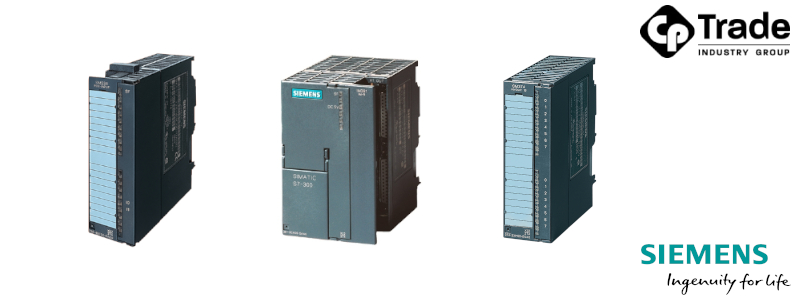Siemens S7-300 signal modules

Time-tested reliability: the S7-300 signal modules. Advantages and disadvantages of use
Modern industrial technology relies on complex yet precise control systems. The S7-300 signal modules (part of the Siemens product family) are an important part of these systems, guaranteeing versatility and reliability as an indispensable component of many industries.
What are signal modules?
Signal modules are devices used to collect, process and transfer information between different parts of an industrial automation system. In the context of S7-300 signal modules, they bridge the gap between physical machine components and the control system.
Characteristics of S7-300 signal modules
S7-300 signal modules can be configured to work with different types of signals, such as analog signals, digital signals, and even specialized temperature signals. The S7-300 signal modules are designed with modularity in mind, meaning that they can be customized to meet the specific requirements of a given project, adding or removing individual modules as needed. In addition, they are fully compatible with various Siemens control systems, enabling easy integration into existing solutions.
Application of S7-300 signal modules
Thanks to their versatility and modularity, S7-300 signal modules are used in many industrial sectors. In the food industry, they are used for process control, temperature and pressure monitoring. In the chemical industry, they are used to supervise chemical processes, as well as when controlling the flow or mixing of substances. In the heavy industry, they are used to monitor and control heavy machinery and equipment. S7-300 signal modules are also used in building automation to control HVAC, lighting or security systems.
Advantages of using S7-300 signal modules:
- Reliability - S7-300 signal modules are known for their long service life and resistance to harsh industrial environments.
- Scalability - thanks to their modular design, systems based on S7-300 modules can be easily expanded as requirements increase.
- Integration - S7-300 signal modules mean easy integration with other Siemens products and third-party systems.
- Versatility - the use of various digital input modules allows flexible adaptation to a variety of application requirements.
- Optical isolation - it provides protection against noise and overload voltages, which significantly increases the reliability of the modules.
- Long service life - built with durability in mind, S7-300 signal modules are characterized by reliability, which works well in high-cycle applications.
- Modularity - The ability to expand the system by adding more modules without changing the main configuration makes the S7-300 modules extremely flexible.
- Support and documentation - Siemens provides extensive documentation and technical support for its products, making them easy to implement and maintain.
Disadvantages of using S7-300 signal modules:
- Installation complexity - due to the different connection strips required and the specification of the modules, installation can be more complex.
- Cost - the high quality and advanced features may affect the cost of purchasing the modules, but the high service life confirms that they are worth the price.
In the era of Industry 4.0 where precision, reliability and flexibility are so crucial, S7-300 signal modules continue Siemens' tradition of product excellence. For engineers and designers of industrial automation systems, S7-300 modules offer proven, efficient and flexible solutions that serve diverse industrial needs.
Learn about the products in the S7-300 range of signal modules
- Signal module for encoders
- 6ES7338-4BC01-0AB0 SIMATIC S7-300 signal module for 3 absolute encoders (SSI) for position reading, 2 latching inputs, isochronous mode, 20 PIN connection strip required.
- Other signal modules
- 6ES7374-2XH01-0AA0 SIMATIC S7-300 simulation module SM 374, for simulation of 16 inputs, 16 outputs or 8 inputs/8 outputs, 16 switches and leds.
- 6ES7370-0AA01-0AA0 SIMATIC S7-300 - DM 370 backup module, for connecting additional modules.
- Interface modules
- 6ES7360-3AA01-0AA0 SIMATIC S7-300 - IM 360 interface module for central rack for connection of up to 3 expansion racks, K-BUS.
- 6ES7361-3CA01-0AA0 SIMATIC S7-300 - IM 361 interface module for expansion rack for connection to central rack (IM360), 24V DC power supply, K-BUS.
Find out more about our offer by visiting the tabs with Siemens-PLC and Schneider-PLC products. If the product you are looking for is not on our website or you have additional questions, please contact us at inquiry@plc-drives.com or directly at our representatives (addresses available in the "Contact" tab). We are able to supply you with all Siemens and Schneider PLC products, including those already withdrawn from production. Check our offer!
